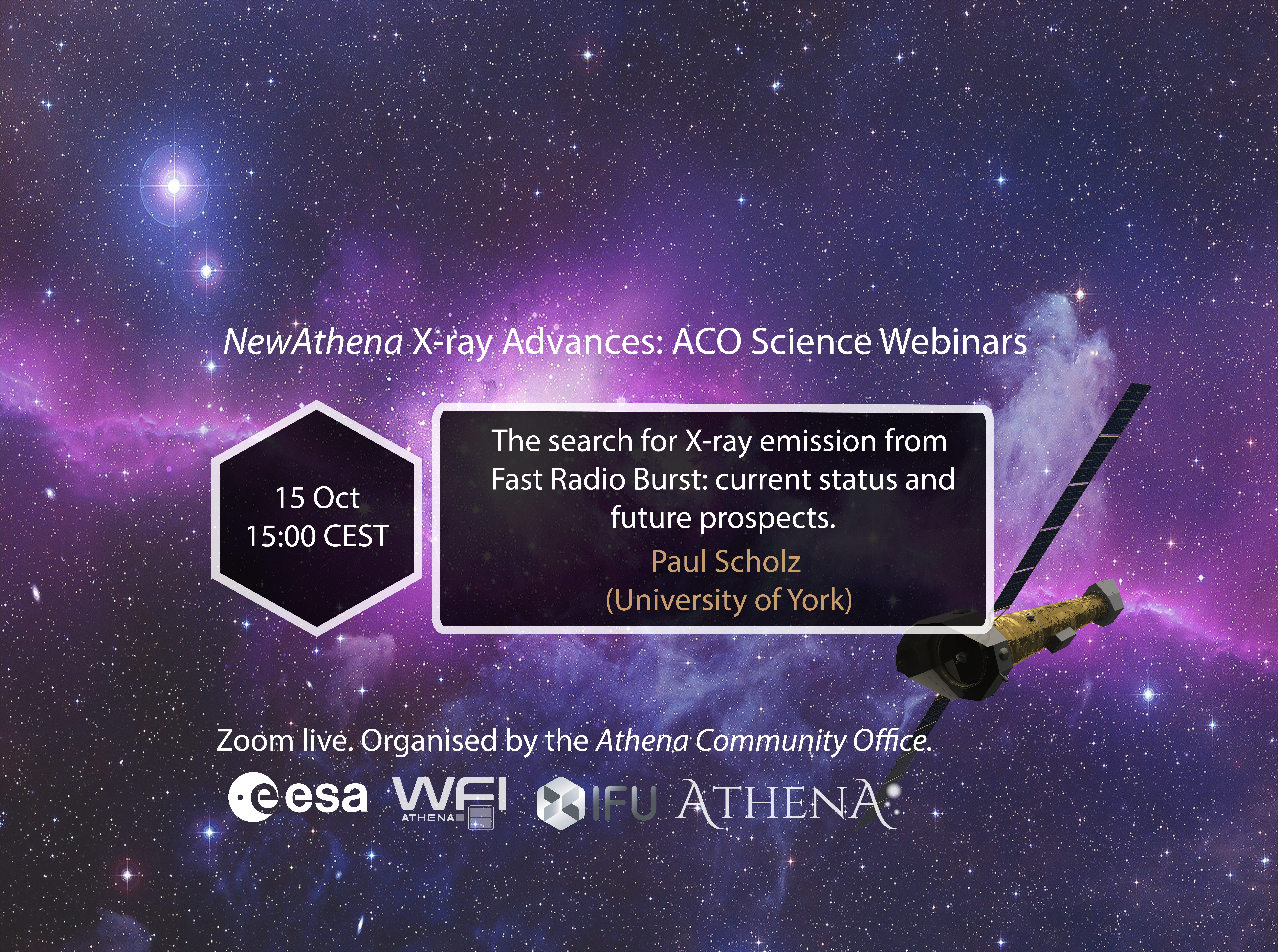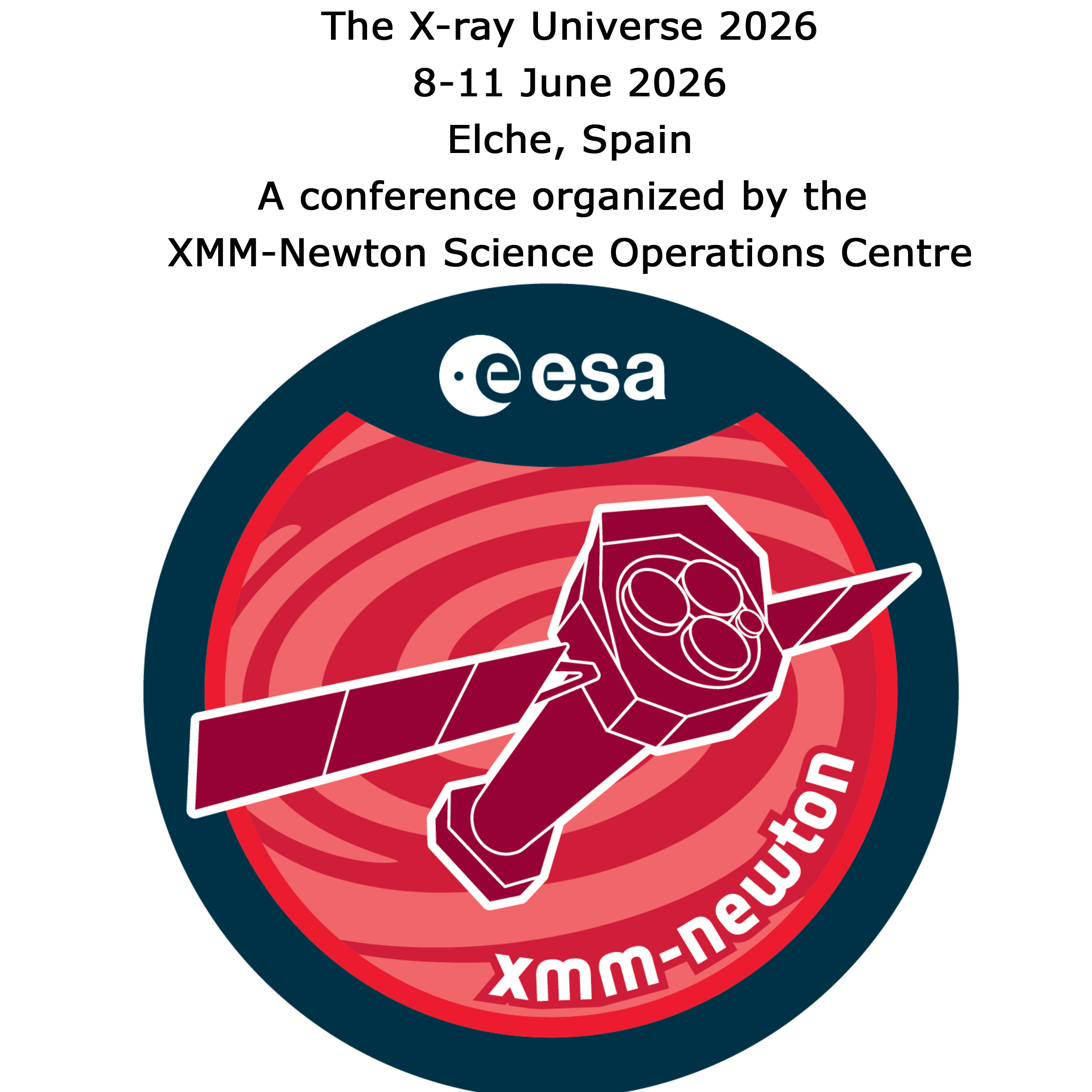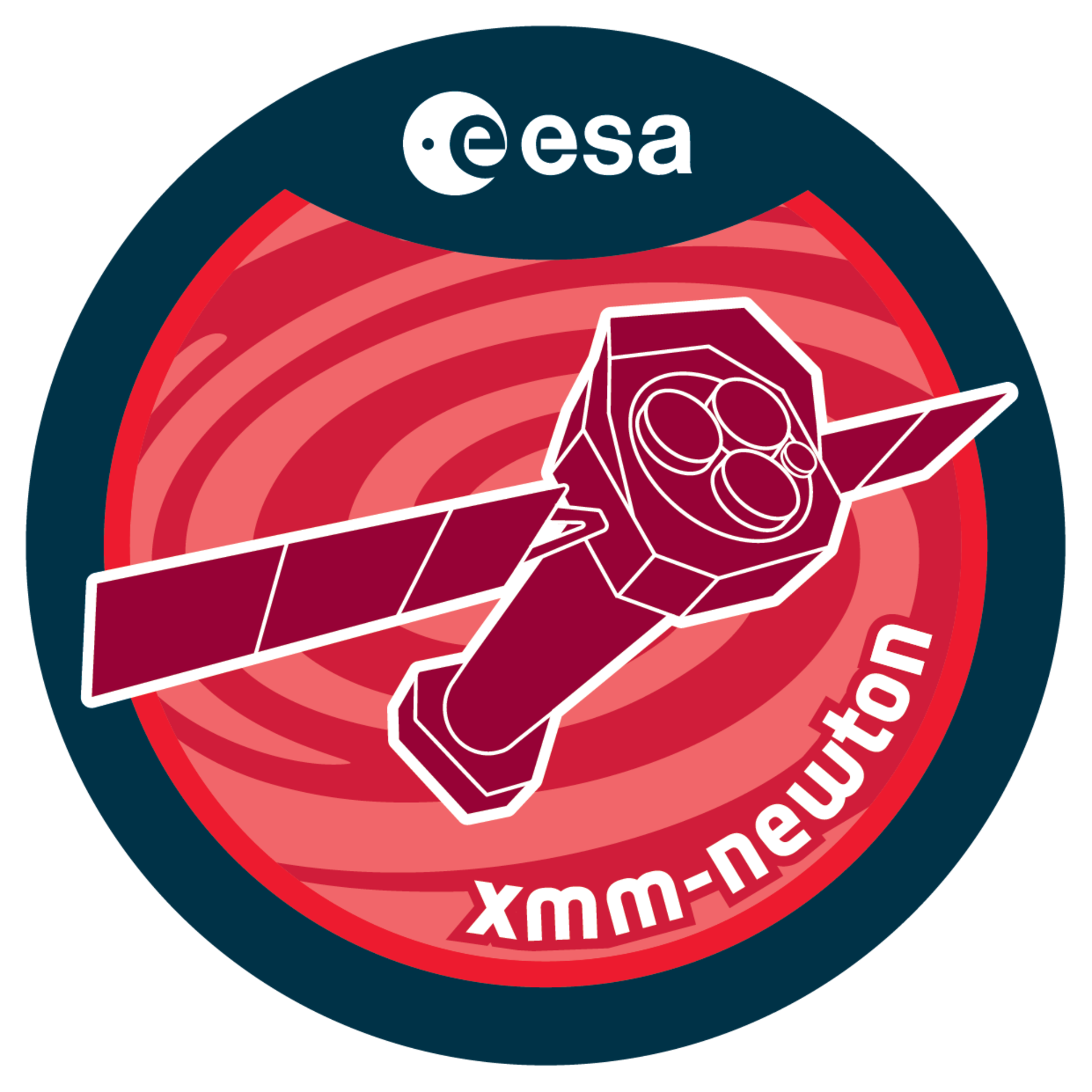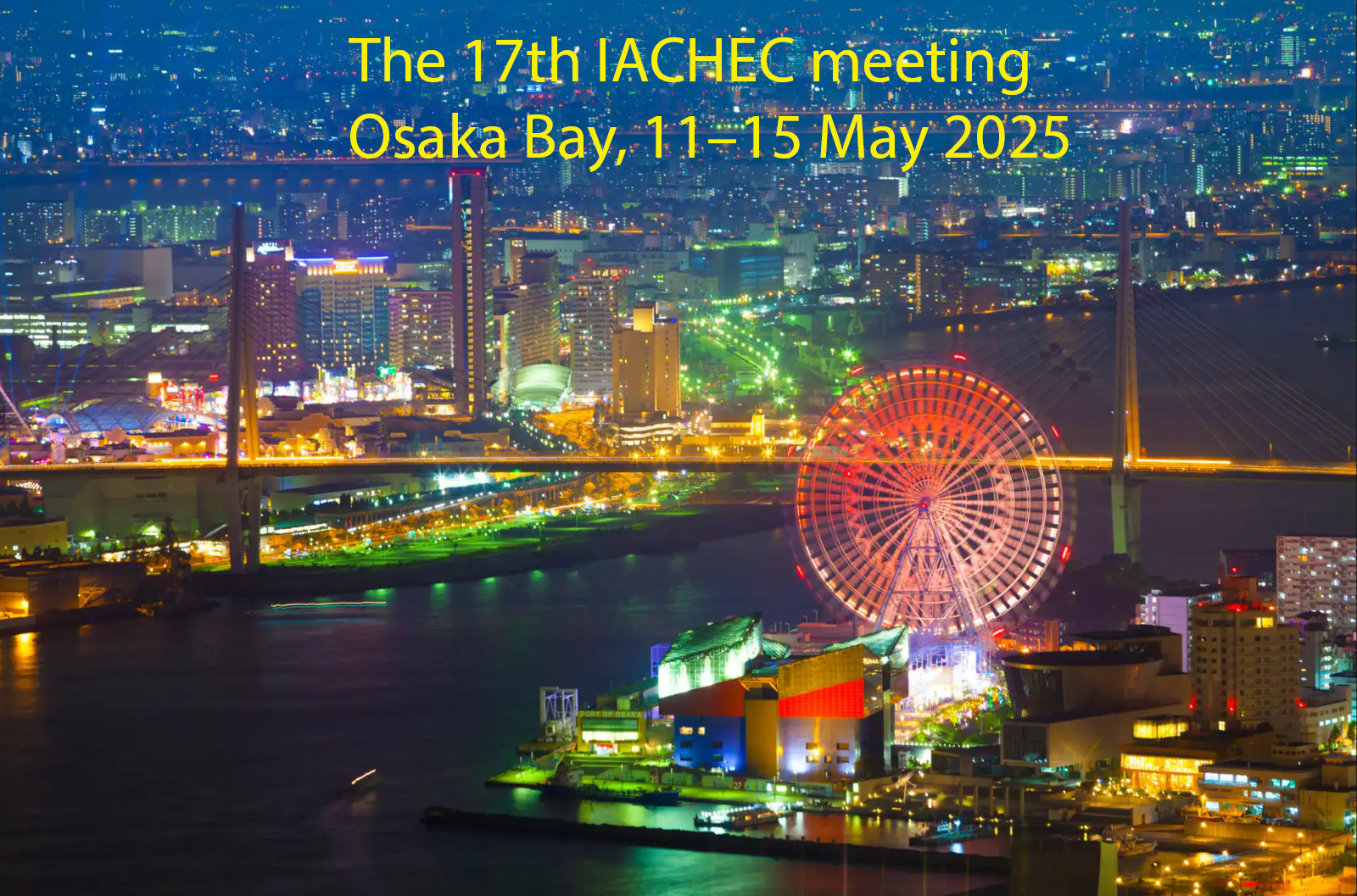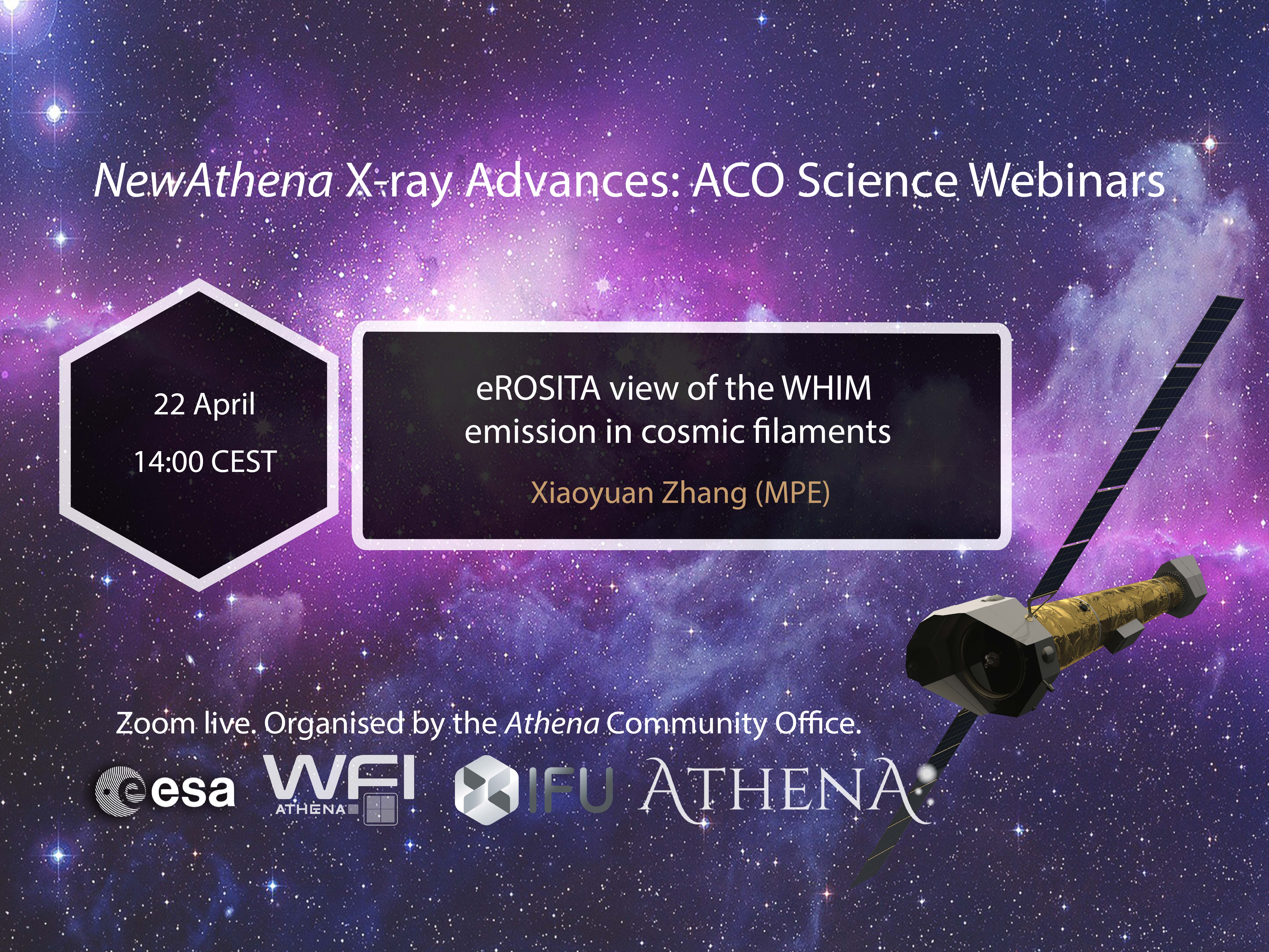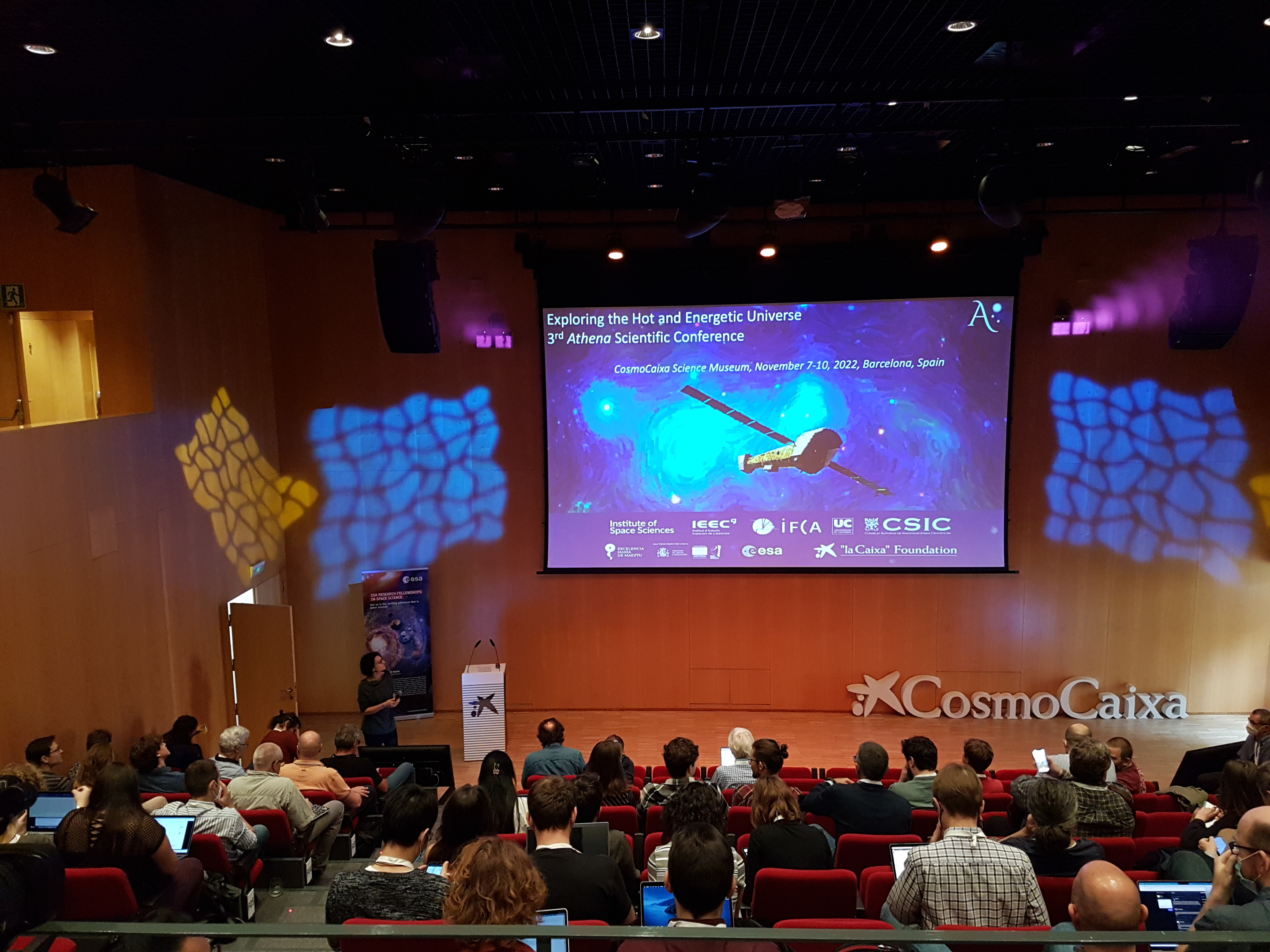
The 3rd Athena Conference highlights a thriving “Hot and Energetic Universe” science case
By Matteo Guainazzi and Nanda Rea,
The 3rd Scientific Conference dedicated to the Athena X-ray Observatory was held from the 7th to the 10th of November 2022. Over 3 days, more than 150 scientists gathered in the spectacular venue of the Museo de la Ciencia Cosmocaixa in Barcelona (Spain). Around 100 scientists were also connected through the remote platform enabling a full hybrid meeting. The impeccably smooth management of the event shall be entirely credited to the efficient and indefatigable efforts by Nanda Rea (ICE-CSIC, IEEC), Alice Borghese (ICE-CSIC, IAC), Silvia Martínez-Núñez (IFCA-CSIC, ACO), and the whole Local Organizing Committee.
The conference enabled the Athena community to highlighting the urgency of a Large-class X-ray observatory such as Athena to achieve significant breakthroughs in our understanding of the science fields embodying the “Hot and Energetic Universe” science theme, while at the same time demonstrating its impact on almost all corners of modern astrophysics. The conference showcased state-of-the-art predictions on all areas that have been at the core of the Athena science case since the inception: the spectroscopic census of a large sample of Active Galactic Nuclei (AGN) down to the Epoch of Reionization; the chemical, dynamical and thermodynamically evolution of the intra-cluster medium in galaxy clusters and groups; sub-relativistic outflows in accreting super-massive black holes over the whole mass scale, unveiling their role in shaping the cosmological evolution of their host galaxies; spatially-resolved spectroscopy of ejecta and regions of particle acceleration in Supernova Remnants, unveiling the nature of the progenitor systems and the density of the surrounding medium; and unprecedentedly accurate constraints on the composition of the interstellar dust, just to mention a few. Many presentations highlighted also the Athena potential in new science fields, such as the characterization of the tenuous (but important in mass!) gas phases in the large-scale filaments of the cosmic web; the potential role of Athena-selected AGN as cosmological probes down to redshift well beyond the Hubble diagram calibration with SNIa; galaxy population study down to the cosmological peak of star formation density; the unprecedent Athena capability to constrain neutron star EoS via pulse profile modelling and spectroscopy of accreting systems; and the revolutionary prospective offered by multi-messenger studies of electromagnetic counterparts of gravitational wave sources such as merging neutron stars and super-massive black holes with Athena.
The conference demonstrated the continuous interest of a large, young, and diverse astrophysical community in Athena. The oral contribution program was oversubscribed by a factor of 2. Around 120 scientists expressed their interest to deliver a talk. More than one-third of the scientific oral contributions at the conference were delivered by early career scientists and PhD students.
The last day of the conference offered the opportunity to keep the community abreast of the status of NewAthena. The Director of Science of the European Space Agency, prof. Günther Hasinger, confirmed that NewAthena is “squarely in the Science Program”, even if its schedule is uncertain due to the unknown level of resources of the Science Program for the years to come. The Head of the ESA Future Mission Science Department, Dr. Frederic Safa, confirmed that ESA is actively working, in strict collaboration with the Athena Instrument Consortia and the International Partners, to define a new mission concept compatible with the ESA programmatic constraints. Such a concept is expected to be endorsed by the ESA Science Program Committee in its first 2023 meeting.
The presentations and e-poster contributions of the conference are open access in a dedicated community space in Zenodo for the whole astronomical community, following the policy of the Athena community of open science.
The Athena community is facing challenging times. However, the extraordinary success of the conference demonstrates that its enthusiasm, and its ingenuity in adapting the Athena science case to the continuously changes scientific landscape are as strong as ever. This ensures that Athena remains the X-ray observatory posed to deliver transformational results, which will enable addressing key questions in modern astrophysics.
Latest News



